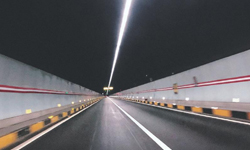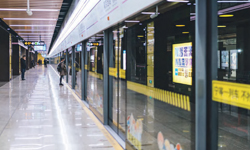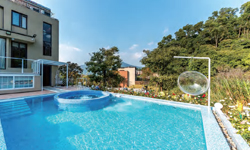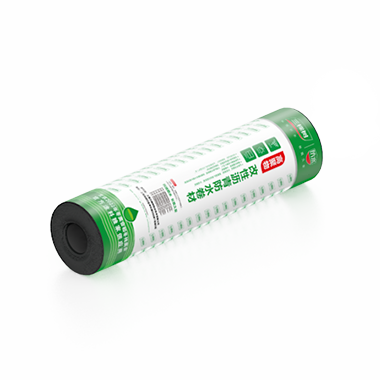
The SGW500 SBS-modified Asphalt Waterproof Membrane is a curlable sheet-like waterproof material made with styrene-butadiene-styrene triblock copolymer (SBS) thermoplastic modified asphalt as the coating material, polyester fiber cloth as the reinforcement layer, and polyethylene film (PE), fine sand (S) and mineral flake (M) as isolation materials on the surface.
Packaging: When folded, the membrane is cylindrical in shape, packaged with heat shrinkable film on the outside and hard paper tube on the inside.

The product complies with the requirements of GB 18242-2008 Styrene Butadiene Styrene (SBS) Modified Bituminous Sheet Materials.
This product is widely used in various fields and types of building waterproof works; and roof waterproof works of various industrial and civil buildings;
Underground waterproof works of various industrial and civil buildings;
Waterproof works of all kinds of concrete-built water tanks, pools, swimming pools, subways, bridges, tunnels and other facilities.

TUNNELS

SUBWAY STATIONS

POOLS
Easy oil extrusion when baked, added with effective modified components to reduce the melting point, and low heating temperature cuts down gas emissions
Wide application area, high applicability, no flow at high temperature, no crack at low temperature, wide applicable temperature range and strong resistance to pressure water
High tensile strength, high elongation, strong adaptability to shrinkage deformation and cracking of substrate concrete layer
High-quality SBS modifier, high resistance to aging and oxidation, high durability, strong thermal stability, resistance to puncture, abrasion and tear, and can effectively withstand the damage and destruction of the upper and lower surfaces in the application process
Hot melting application process (recommended)
Substrate treatment → application of additional layer → hot melt large-area application (lay membrane) →air discharging and compaction →closed water test → construction of protective layer
Key Points
Substrate treatment: Remove floating dust from the substrate surface, and the substrate should be solid, smooth and clean; evenly brush substrate treatment agent, with no bottom exposure or missed coating.
Application of additional layer: Internal and external corners, pipe roots, eaves gutters, deformation joints and other parts should be treated with an additional layer according to the specifications.
Large-area application: Open the membrane to release stress, and firstly lay the membrane according to the snapping line position; bake the lower surface of the membrane and the surface of the substrate with hot melting tools, roll the membrane while baking, and then roll it with the roller to firmly bond with the substrate.
Lap treatment: The lap width of the SBS membrane should be 100mm, and the lap area of the membrane should be sealed separately. The same hot melting method should be adopted for application, to the extent of hot-melt modified asphalt overflowing from the lap of the upper and lower membranes.
Closed water test: Conduct closed water test according to the requirements of the application plan.
Construction of protective and isolation layers: All outer surface of the waterproof layer should be provided with a protective layer according to relevant specifications or design requirements.
Hot glue application process
Substrate treatment → application of additional layer → hot glue large-area application → air discharging and compaction → closed water test → construction of protective layer
Key Points
Substrate treatment: Clean the surface first, and the substrate should be solid, flat and clean.
Application of additional layer: All internal and external corners, pipe roots, eaves gutters, deformation joints and other parts should be treated with an additional layer, and the membrane should be cut into appropriate size and shape in advance.
Large-area application: Adopt non-cured coating for the composite application of the hot glue waterproof membrane, and the coating thickness should meet the requirements of relevant specifications; while the non-cured coating is applied, the waterproof membrane should be rolled at the same time.
Lap treatment: The lap width of the membrane should be 100mm, and the lap area of the membrane should be sealed separately. The hot melting method should be adopted for application, to the extent of asphalt strips overflowing from the lap area of the upper and lower membranes.
Closed water test: Conduct closed water test according to the requirements of the application plan.
Application of protective and isolation layers: A protective layer should be created on the outer surface of the waterproof layer according to relevant specifications or design requirements.
During storage and transportation, products of different types and specifications should be stored separately and should not be mixed. Avoid exposure to sunlight and rain, and ensure good ventilation
The storage temperature should not be higher than 50℃. When stored in standing position, the product can only be stacked in one layer, and not be more than two layers during transportation
Avoid inclining or transverse pressure during transportation, and cover with tarpaulin if necessary
Under normal storage and transportation conditions, the storage period of the product is one year from the date of production
Application is strictly prohibited on rainy or snowy days, or in gale weather above Grade 5.
In case of rain in the application process, it is necessary to protect the membranes which are already laid.
There should be a suitable distance between the flame heater nozzle and the membrane surface, and heating should be uniform within the membrane width, to the extent of the membrane surface melting to bright black. The membrane should not be excessively heated.
There should be complete safety protection facilities on the application site, and fire safety equipment should be installed as required.
Please read the product safety instructions carefully. Our safety experts would be happy to give you suggestions on safety, health and environmental protection issues.
The above information and suggestions are made based on our experience and are for reference use only. They can't replace the experiments done by customers themselves. As 3TREES and its dealers cannot control the storage, handling and use conditions of 3TREES products after delivery, no quality accidents or economic disputes caused by improper use can be attributed to our suggestions. In all application scenarios, the customer shall be responsible for abiding by the intellectual property rights of third parties.
Without our consent, technical information shall not be provided for third parties.









 Tel:
Tel: Email:
Email: Address:
Address:





